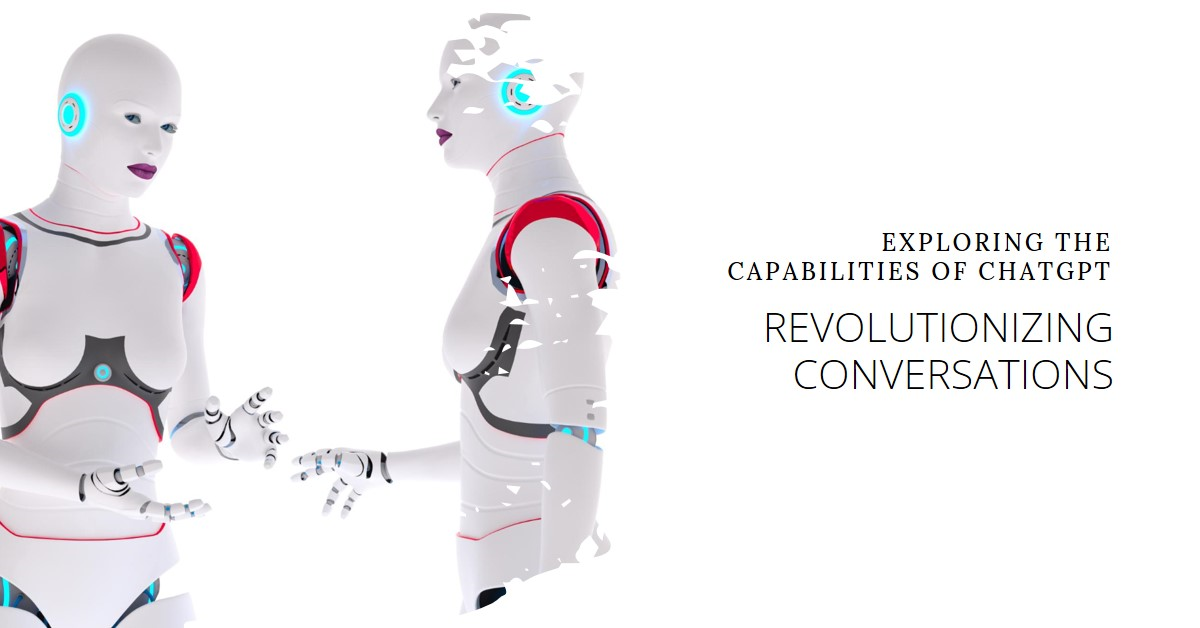
Discover the transformative impact of ChatGPT, a revolutionary AI conversational model. Learn about its development, applications, benefits, and future trends in this comprehensive article. Explore how ChatGPT is enhancing customer service, content creation, education, and more.
Introduction
In the rapidly evolving world of artificial intelligence, conversational models like ChatGPT have emerged as groundbreaking tools. ChatGPT, developed by OpenAI, has revolutionized the way we interact with technology, providing advanced conversational capabilities that enhance user experiences across various applications. This article delves into the intricacies of ChatGPT, exploring its development, functionality, applications, and future potential.
The Rise of AI and Conversational Models
Artificial Intelligence (AI) has come a long way since its inception. Early AI systems were limited in scope and capability, but advancements in machine learning and natural language processing (NLP) have paved the way for sophisticated conversational models like ChatGPT. These models can understand and generate human-like text, making interactions with machines more intuitive and efficient.
What is ChatGPT?
ChatGPT is a state-of-the-art AI language model developed by OpenAI. It is part of the Generative Pre-trained Transformer (GPT) series, designed to understand and generate natural language text. ChatGPT can engage in meaningful conversations, answer questions, provide recommendations, and even assist with creative writing tasks.
The Evolution of AI Language Models
Early Beginnings
The journey of AI language models began with simpler algorithms that could process and generate text based on predefined rules. These early models laid the foundation for more advanced systems that could learn from data and improve over time.
From GPT-1 to GPT-4
The GPT series has seen significant advancements with each iteration. GPT-1 introduced the concept of generative pre-training, while GPT-2 and GPT-3 expanded on this foundation, offering more powerful and flexible models. GPT-4, the latest version, boasts even greater capabilities, making it one of the most advanced conversational AI models available.
What Makes ChatGPT Stand Out?
Advanced Natural Language Processing
ChatGPT’s strength lies in its advanced NLP capabilities. It can understand context, recognize nuances, and generate coherent responses, making interactions feel more natural and engaging.
Versatility and Applications
One of ChatGPT’s standout features is its versatility. It can be used across a wide range of applications, from customer service and content creation to personal assistance and educational tools.
How ChatGPT Works
The Architecture Behind ChatGPT
ChatGPT is built on a transformer architecture, which allows it to process and generate text efficiently. This architecture enables the model to handle complex language tasks, making it capable of engaging in detailed and contextually relevant conversations.
Training and Fine-Tuning
Training ChatGPT involves feeding it vast amounts of text data from diverse sources. This pre-training phase allows the model to learn language patterns and structures. Fine-tuning, on the other hand, involves refining the model’s performance on specific tasks or datasets to improve its accuracy and relevance.
Applications of ChatGPT
Customer Service
ChatGPT can be integrated into customer service platforms to handle inquiries, provide support, and resolve issues, enhancing customer satisfaction and reducing response times.
Content Creation
Writers and marketers can leverage ChatGPT for content creation, generating ideas, drafting articles, and refining their work. This application saves time and boosts productivity.
Personal Assistants
As a personal assistant, ChatGPT can help users manage their schedules, set reminders, and answer questions, making daily tasks more manageable.
Educational Tools
In the educational sector, ChatGPT can serve as a tutor, providing explanations, answering questions, and offering personalized learning experiences to students.
Benefits of Using ChatGPT
Efficiency and Productivity
By automating routine tasks and providing instant responses, ChatGPT enhances efficiency and productivity across various domains.
Enhanced User Experience
ChatGPT’s ability to understand and generate human-like text leads to more engaging and satisfying user experiences.
Cost-Effectiveness
Implementing ChatGPT can reduce operational costs, especially in customer service and support functions, by minimizing the need for human intervention.
Real-World Examples
Businesses Leveraging ChatGPT
Many businesses have successfully integrated ChatGPT into their operations. For instance, e-commerce companies use it to handle customer inquiries, while media outlets employ it for content generation.
Success Stories and Case Studies
Case studies highlight the tangible benefits of using ChatGPT. Companies report improved customer satisfaction, increased efficiency, and significant cost savings.
Challenges and Limitations
Ethical Considerations
While ChatGPT offers numerous advantages, it also raises ethical concerns. Issues such as bias, misinformation, and data privacy need to be addressed to ensure responsible AI use.
Handling Misinformation
ChatGPT can sometimes generate incorrect or misleading information. Continuous monitoring and updating are essential to mitigate this risk.
Technical Constraints
Despite its advanced capabilities, ChatGPT is not without limitations. It may struggle with highly specialized tasks or produce contextually inappropriate responses.
The Future of ChatGPT and AI
Ongoing Developments
Research and development in AI are ongoing, with improvements to ChatGPT and other models being made regularly. These advancements aim to enhance accuracy, reduce biases, and expand capabilities.
Future Trends and Innovations
Future trends in AI and ChatGPT include increased personalization, better integration with other technologies, and expanded use in industries such as healthcare and finance.
Ethical and Responsible AI Use
Ensuring Transparency and Accountability
Transparency in how AI models like ChatGPT are developed and used is crucial. OpenAI and other organizations are working towards making AI more transparent and accountable.
Privacy and Security Concerns
Protecting user data and ensuring privacy are paramount. Measures must be in place to safeguard sensitive information and maintain trust.
User Perspectives
Feedback from Users
User feedback is invaluable in refining ChatGPT. Insights from users help identify areas for improvement and guide future developments.
Common Questions and Concerns
Users often have questions about ChatGPT’s accuracy, privacy, and applications. Addressing these concerns is key to fostering trust and adoption.
How to Integrate ChatGPT into Your Workflow
Practical Steps and Tips
Integrating ChatGPT involves identifying suitable use cases, training the model on relevant data, and continuously monitoring its performance.
Best Practices for Implementation
Best practices include starting with a pilot project, gathering user feedback, and iteratively improving the system.
Comparing ChatGPT with Other AI Models
Strengths and Weaknesses
Compared to other AI models, ChatGPT excels in natural language understanding and generation but may lag in handling highly technical or niche tasks.
Unique Features and Capabilities
ChatGPT’s unique features, such as its conversational abilities and versatility, set it apart from other models.
Educational Impact of ChatGPT
AI in Classrooms
ChatGPT can transform education by providing personalized learning experiences, supporting teachers, and offering instant feedback to students.
Empowering Learning and Teaching
By leveraging AI, educators can enhance their teaching methods, making learning more interactive and engaging.
Conclusion
ChatGPT represents a significant milestone in the evolution of AI. Its advanced capabilities, versatility, and real-world applications demonstrate its potential to revolutionize various industries. As AI continues to develop, the future looks promising for ChatGPT and similar models, paving the way for more intelligent and responsive technologies.
FAQs
What is ChatGPT and how does it work? ChatGPT is an AI language model developed by OpenAI that can understand and generate human-like text. It works by processing text inputs and generating contextually relevant responses based on its training data.
What are the main applications of ChatGPT? ChatGPT is used in customer service, content creation, personal assistance, and education, among other applications.
How does ChatGPT handle ethical concerns? OpenAI and other developers implement measures to address ethical concerns, such as reducing bias, ensuring transparency, and protecting user privacy.
What are the limitations of ChatGPT? Limitations include the potential for generating incorrect information, handling highly specialized tasks, and producing contextually inappropriate responses.
How can businesses benefit from using ChatGPT? Businesses can enhance efficiency, improve customer satisfaction, and reduce operational costs by integrating ChatGPT into their workflows.
Also Visit:
The Unexpected Romance of Travis Kelce and Taylor Swift: A Modern Fairy Tale
Influencers Gone Wild: The Untamed World of Social Media Fame







